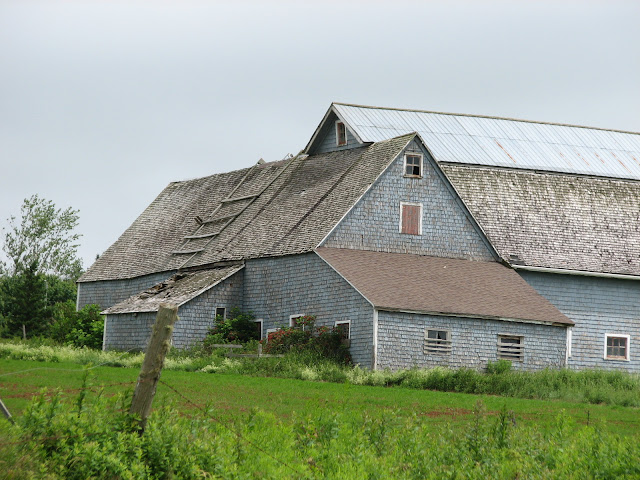Gordon Sherren, of Crapaud, proudly shows his handcrafted replica of a late 1800s stone flour mill, which will be on display in the South Shore Actiplex at the Crapaud Exhibition this weekend. The miniature mill can run just like a full-sized counterpart, with an overshot water wheel powering the structure’s many small cogs and pulleys.
Published on July 26, 2011
CRAPAUD — Gordon Sherren had a firm picture in his mind of what he wanted to build since 1987, although the vision started much earlier.
A trip to an old flour mill in Scotland during the late 1980s was but one of many times the 70-year-old had drawn inspiration from the structures, which were once the primary way of grinding grain on P.E.I.
While the once-bountiful mills are rare today, after a year of tedious work and careful attention to detail, there’s now a new one running in Crapaud.
Well, sort of.
A scaled-down replica of a stone grist mill, which is about seven-feet high, will be on display at the Crapaud Exhibition this Friday and Saturday.
The replica, which is powered by a mix of electricity and an overshot water wheel, will be featured in the south side of the actiplex and is a fitting piece for the exhibition, which has a heavy focus on Island agriculture and heritage.
But having the mill on display was the last thing on Sherren’s mind when the enthusiast went out to begin the project last summer.
“I’ve been overwhelmed by the amount of interest people have had in this,” said Sherren. “It just started out as a project for myself, something to build.”
While Sherren only found time to begin his project after moving back home to P.E.I. from Ontario three years ago, his interest in mills are deep-rooted and steadfast.
Sherren has “always been fascinated by water,” and is able to remember walking down to the old mill on the outskirts of Crapaud, with his father in the 1940s and 1950s.
The interest continued through Sherren’s whole life, with full-sized authentic mill scales laying only a few feet away from his handmade five-inch replicas, in the barn where he built his new structure.
While Sherren has seen many mills throughout his life, visiting some old flour and grist mill museums and obtaining records and graphs from the Charlottetown Library served well for researching proper terminology and discovering how to make the replica run just like a full-sized structure.
“I just needed some information and specifics,” said Sherren.
Sherren said his brother, Robert, was one of his biggest supporters during the 1,000 plus hours it took to build the model and went to the barn every week to see his progress.
Robert has watched Sherren build many projects, but said his brother outdid himself with this one.
“It’s amazing what he was doing, the fine technical skills,” said Robert. “He must have had patience galore.”
Robert also pointed out that his brother had built the structure without having any blueprints to go by, instead relying on visits to museums and his own research.
“He certainly was able to have a vision of what he was doing,” said Robert.
Sherren said he isn’t sure what will ultimately happen to the structure, but he has other models, one of a mussel mud digger and another of a horse capstan, featured at the Orwell Corner Historic Village Museum.
While talks of a new provincial museum have perked Sherren’s interest, he said he won’t be rushing ahead of himself to find a new home for the mill.
“I’m not going to commit to anything yet, but I’m open to suggestions of where it should be.”

































